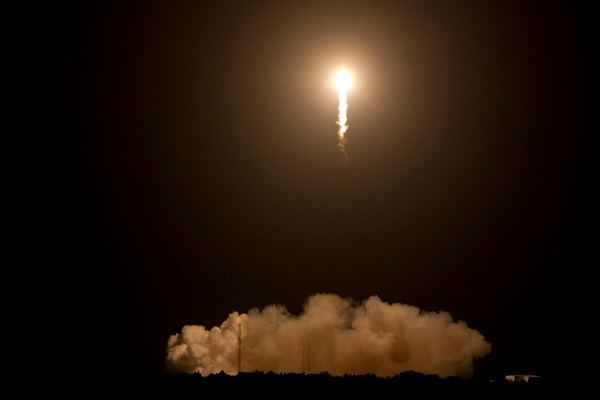
If you’re a team looking to campaign GT3 machinery on some of Japan’s finest racetracks, lately you have been rather spoiled for choice.
Of course, there is SUPER GT, with FIA GT3 cars making up the bulk of the lower GT300 class and providing reliably excellent action against the homespun ‘JAF’ (GTA-GT300) cars. Then there is Super Taikyu, where GT3s compete for overall wins, albeit in fewer numbers.
But since last year, there has been another option: GT World Challenge Asia. Or more specifically, the Japan Cup segment that was devised to bolster grid numbers for the revived series last year and comprises four rounds of the six-race schedule in 2023.
The Japan Cup begins this weekend at Fuji with a huge 36-car entry, which according to the SRO (which runs all the GT World Challenge series worldwide) makes it a joint-record for the highest amount of GT3 cars ever assembled for a single race in Japan. No fewer than 12 manufacturers are represented, including brands like Honda, Lexus and Nissan that are rarely seen outside Japan these days, as well as the Callaway Corvette.
Last year’s Japan Cup champions, Cozzolino and gentleman racer Takeshi Kimura, are back to defend their title driving for Kimura’s CarGuy Racing squad. But for the first time, they will have the brand-new ORECA-built Ferrari 296 GT3 at their disposal.

Cozzolino has been racking up the miles in the 296 GT3 in the third tier of the European sportscar pyramid, the Michelin Le Mans Cup series of which the Road to Le Mans event is a part. And he’s excited to go up against a massively improved grid compared to last year, featuring numerous names that will be familiar to fans of GT racing worldwide.
Among the newcomers/returnees to the series for this year are DTM racer Dennis Olsen, WEC GTE Am regular Alessio Picariello, GT racing veteran Alvaro Parente, ex-BMW IMSA man Jesse Krohn, and Mercedes GT3 aces Dani Juncadella and Maximilian Gotz.
“Last year we had mostly Japanese cars on the grid, and we were using the 488, a very mature car in terms of set-up and we just had to focus on our driving,” Cozzolino said in a recent conversation with Motorsport.com.
“From my experience of the 296 in the Michelin Le Mans Cup, while it’s fast, it still needs a lot of work. It’s still in a development phase. It will be the first time for the car on Japanese tracks and Pirelli tyres, and we’ve had no testing prior to the race weekend.
“I am confident we can be competitive, but now there’s a lot more competition, good Asian drivers and European drivers, which is great to see. I think our activities last year contributed to the SRO to show how amazing the championship is.”
Besides the higher car count and lack of ‘JAF’-rules cars, there are a few important differences between SUPER GT’s GT300 class and GT World Challenge Asia. For one, there’s no tyre war - everyone is on the spec Pirellis used in other SRO series worldwide. Secondly, there’s much more track time on offer, with pre-event testing kicking off on a Thursday rather than just being limited to a single practice session on Saturday.
But most significantly, there’s no success ballast that has always been a feature of SUPER GT. A different system is used that is intended to achieve the same effect of keeping things unpredictable and ensuring the championship goes down to the wire.

Instead of accruing ballast, the top three finishers are simply handed pitstop time penalties of 15, 10 and five seconds respectively for the following race.
Cozzolino is a huge fan of this way of doing things, calling it “predictable, fair and equal”, as well as encouraging more on-track action by forcing faster drivers to fight their way back through the field after serving their penalties.
“I think it makes the racing more interesting,” adds the Japanese-Italian. “You see more overtaking, it makes the drivers more hungry - I had to pass a lot of cars last year to gain back positions. I think it’s a wonderful format and keeps the racing interesting.”
Asked to weigh up the merits of GTWC Asia pitstop penalties and SUPER GT ballast, Cozzolino says: “The ballast system makes it harder to drive the car, and it’s more stressful. The time penalty is more clear. Even if you are leading, if you have a penalty you’ll lose some places, but then all you have to do is pass them again!
“I think [in SUPER GT], it can get quite predictable by the middle of the season; you see the leading teams playing it safe, not risking too much. But in this championship, you have to overtake no matter what, trying to gain back what you lose from the penalties.”
After this weekend’s Fuji round, the Japan Cup takes in visits to Suzuka, Motegi and Okayama, before the championship proper wraps up at Sepang in Malaysia in September.
With the pitstop penalty system, whoever comes away with the trophy at the end of the four-round mini series will have certainly done so having made plenty of passes.








